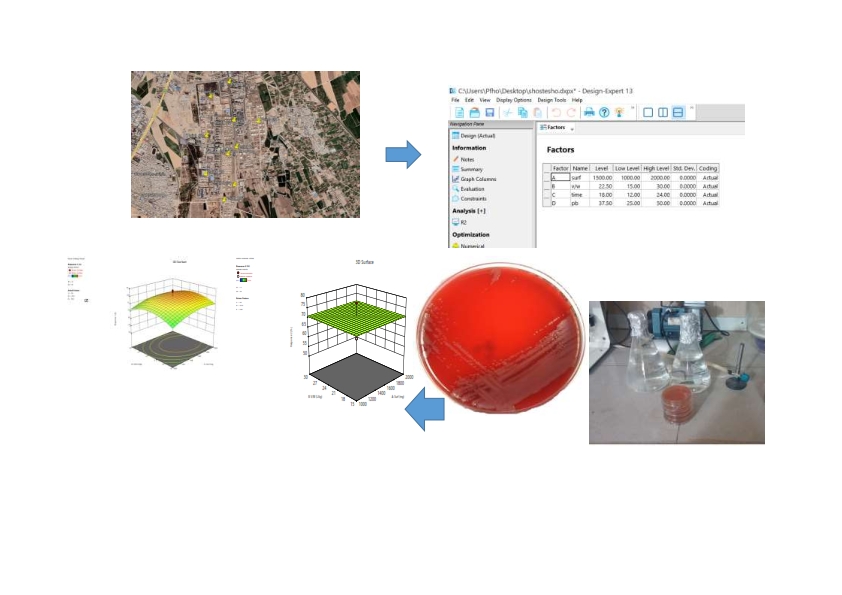
This study was carried out with the aim of using three processes of soil washing, electrofenton and biological leaching method in order to rehabilitate the soil contaminated with lead and phenanthrene around the south Tehran oil refinery. The variables examined in this study are the amount of soil (500, 1000, 1500, 2000 mg), the ratio of surfactant to soil (7.50, 15, 22.50, 30, 37.50 L/Kg), time (6, 12, 18, 24, 30 hours), lead concentration (25, 50, 37.50, 62.50 mg/kg) and phenanthrene concentration (50, 100, 15, 200 mg/kg). In the washing process, the highest percentage of lead removal is 78.23% at the contact surface of 2000 mg, the surfactant-to-soil ratio is 30 ml/kg, the time is 24 hours, the concentration of lead and phenanthrene is 50 and 100 mg/kg and the highest removal percentage of phenanthrene (73.4%) in the soil amount of 1000 mg, the ratio of soil to surfactant equal to 30 liters/kg, in 12 hours, the amount of lead and phenanthrene were obtained equal to 25 and 100 mg/kg. Next, the soil was placed in a discontinuous reactor with graphene electrode as cathode and iron electrode as anode to conduct electrofenton. The investigated variables are solution pH (2, 4, 6, 8, 10), reaction time (12.5, 25, 37.5, 50, 62.5 minutes), hydrogen peroxide concentration (0.5, 1, 1.5, 2, 2.5 w/w) and direct electric current (0.75, 1.5, 2.25, 3, 3.75 A). The results indicated that in the electrofenton pH process, hydrogen peroxide concentration and then voltage had the greatest effect and time had the least effect on the removal of lead and phenanthrene. In this way, the highest percentage of lead removal was 85.4% at pH equal to 8, hydrogen peroxide concentration equal to 2 W/W, current equal to 1.5 A and 50 minutes and the highest percentage of phenanthrene removal (85.9%) at pH equal to 6, hydrogen peroxide concentration equal to 1.5W/W, current equal to 2.25 A and 37.5 minutes were obtained. In the biological leaching method, the purified strain (Pseudomonas aeruginosa) was isolated from the soils around the refinery. Environmental pH (3, 5, 7, 9, 11), pollutant to biomass ratio (7.50, 15, 22.50, 30, 37.5 mg/g) and retention time (1, 2, 3, 4, 5 hour) were considered as main variables. pH was the most important parameter influencing the removal of lead and phenanthrene from soil in biological method. The highest percentage of lead removal with 85.4% was obtained at pH equal to 8, hydrogen peroxide concentration equal to 2W/W, current 1.5 A and 50 minutes time. In the case of phenanthrene, the highest removal percentage of phenanthrene (85.9%) was measured at pH equal to 6, hydrogen peroxide concentration of 1.5 W/W, current of 2.25 A and in 37.5 minutes. Comparing the results of the third stage of soil cleaning with the control sample without preparation steps with the removal percentage of 0.67 and 0.42 for lead and phenanthrene, shows the effect of the soil preparation process in order to improve the ability of bacteria to function and shows that by combining three methods of washing, electrofenton and biologic, it is possible to rehabilitate contaminated soils resistant to biological decomposition.
Total file downloads: 6